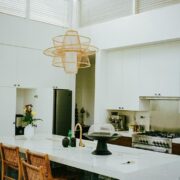Glass walls have become a hallmark of modern designs and architecture, offering sleek aesthetics, natural light, and a seamless connection between indoor and outdoor spaces. However, designing with glass walls requires careful consideration to ensure both functionality and safety.
Here are the essential dos and don’ts to guide you in incorporating glass walls into your design.
Do: Embrace Natural Light
One of the primary benefits of glass walls is their ability to flood interiors with natural light. This not only enhances the aesthetic appeal of your space but also promotes well-being and reduces energy costs. When designing with glass walls, strategically place them to maximize sunlight during the day. Consider the orientation of your home and the path of the sun to ensure optimal light exposure. For example, south-facing glass walls can provide consistent daylight throughout the year.
Don’t: Ignore Privacy Concerns
While glass walls offer transparency and openness, they can also compromise privacy. It’s essential to balance openness with the need for privacy, especially in areas like bedrooms and bathrooms. Use frosted glass to obscure views without sacrificing light. Incorporate blinds, curtains, or smart glass that can switch between opaque and transparent states at the touch of a button. These solutions allow you to enjoy the benefits of glass walls while maintaining your privacy when needed.
Do: Consider Energy Efficiency
Glass walls can significantly impact the energy efficiency of your home. Modern glass technologies, such as double glazing and low-emissivity (Low-E) coatings, can improve insulation and reduce heat transfer. These features help keep your home warm in the winter and cool in the summer, reducing reliance on heating and cooling systems. Additionally, using thermally broken frames can prevent heat loss and condensation, further enhancing the energy efficiency of your glass walls.
Don’t: Overlook Safety and Security
Safety and security are paramount when incorporating glass walls into your design. Ensure that all glass used in walls is tempered or laminated. Tempered glass is heat-treated to be stronger and shatter into small, less dangerous pieces if broken. Laminated glass consists of two layers of glass with a plastic interlayer that holds the glass together if shattered. These types of glass provide the necessary strength and safety for large glass installations.
Do: Explore Bent Glass
Bent glass, also known as curved glass, is a versatile and stylish option for glass walls. Glass bending creates curved glass by heating flat glass until it becomes pliable and then shaping it over a mold. Once cooled, it retains the curved shape. This type of glass offers unique design possibilities, allowing for smooth, flowing lines and a more dynamic aesthetic.
Incorporating bent glass into your design can create stunning visual effects. Use it to create curved glass walls that follow the natural contours of your home or landscape, adding a sense of movement and elegance. Bent glass can also be used in staircases, partitions, and balustrades, offering a modern twist on traditional design elements.
Don’t: Neglect Acoustics
Glass walls can impact the acoustics of a space, potentially leading to issues with noise transmission and echo. To mitigate these effects, consider using acoustic glass, which consists of multiple layers with special interlayers designed to reduce sound transmission. Additionally, incorporating soft furnishings, rugs, and acoustic panels can help absorb sound and improve the overall acoustic environment.
Do: Integrate Seamlessly with Nature
One of the most compelling reasons to use glass walls is to create a seamless connection with the outdoors. Position glass walls to frame views of your garden, a beautiful landscape, or a scenic vista. This integration not only enhances the aesthetic appeal of your space but also promotes a sense of tranquility and connection with nature. Consider using sliding or folding glass doors that open wide to blur the boundaries between indoor and outdoor living spaces.
Don’t: Forget About Maintenance
Glass walls require regular maintenance to keep them looking their best. Plan for easy access to clean both the interior and exterior surfaces. Consider using self-cleaning glass, which has a special coating that breaks down dirt and allows it to be washed away by rainwater. Additionally, ensure that any hardware, such as hinges and seals, is regularly inspected and maintained to ensure the longevity and functionality of your glass walls.
Incorporating glass walls into your design can transform your home, bringing in light, enhancing views, and creating a modern, elegant aesthetic. By following these dos and don’ts, you can ensure that your glass walls are both beautiful and practical, adding value and enjoyment to your living space.




















